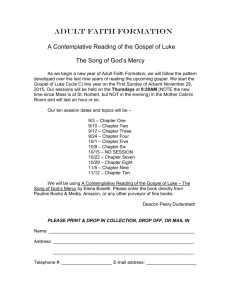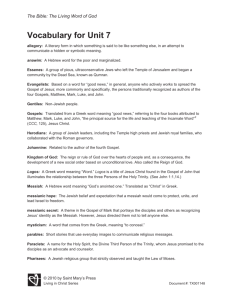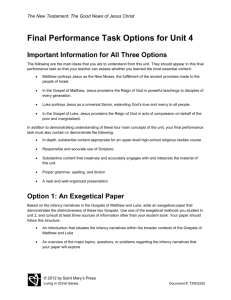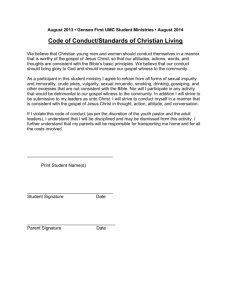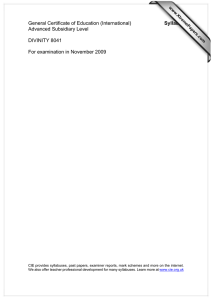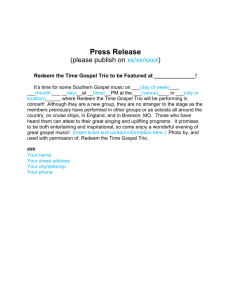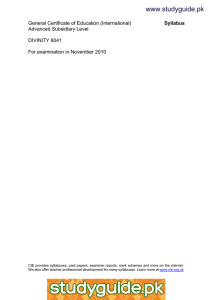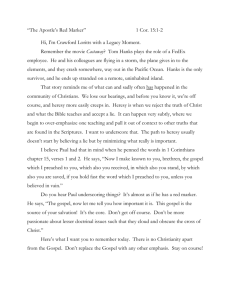New Testament Examination (take home version)
advertisement
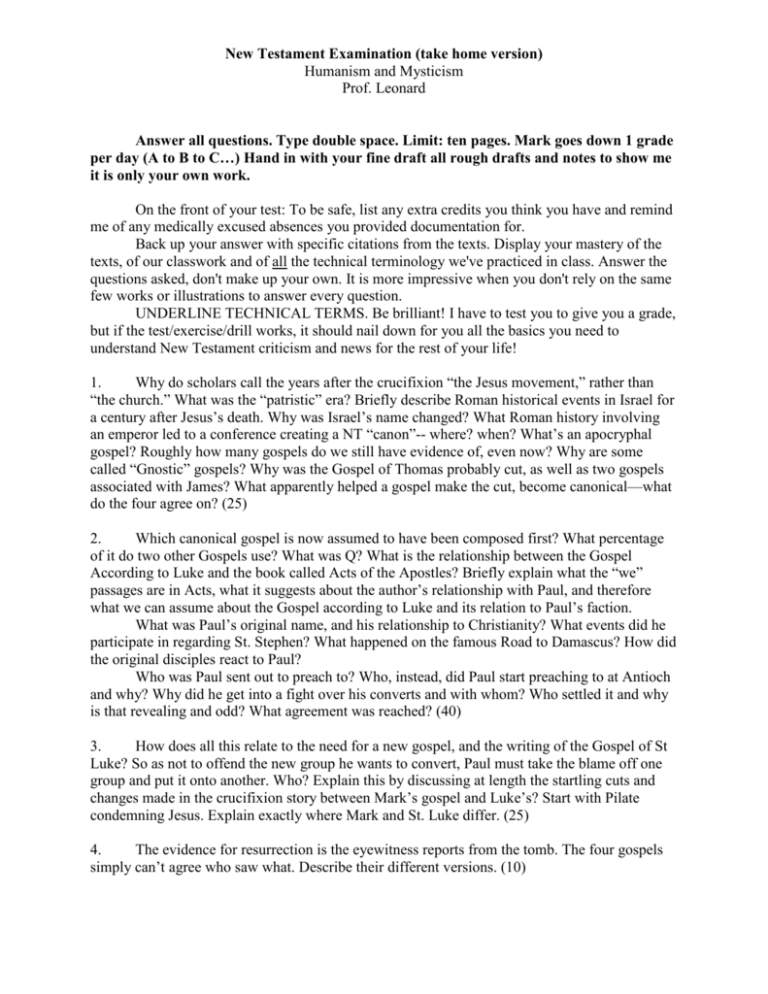
New Testament Examination (take home version) Humanism and Mysticism Prof. Leonard Answer all questions. Type double space. Limit: ten pages. Mark goes down 1 grade per day (A to B to C…) Hand in with your fine draft all rough drafts and notes to show me it is only your own work. On the front of your test: To be safe, list any extra credits you think you have and remind me of any medically excused absences you provided documentation for. Back up your answer with specific citations from the texts. Display your mastery of the texts, of our classwork and of all the technical terminology we've practiced in class. Answer the questions asked, don't make up your own. It is more impressive when you don't rely on the same few works or illustrations to answer every question. UNDERLINE TECHNICAL TERMS. Be brilliant! I have to test you to give you a grade, but if the test/exercise/drill works, it should nail down for you all the basics you need to understand New Testament criticism and news for the rest of your life! 1. Why do scholars call the years after the crucifixion “the Jesus movement,” rather than “the church.” What was the “patristic” era? Briefly describe Roman historical events in Israel for a century after Jesus’s death. Why was Israel’s name changed? What Roman history involving an emperor led to a conference creating a NT “canon”-- where? when? What’s an apocryphal gospel? Roughly how many gospels do we still have evidence of, even now? Why are some called “Gnostic” gospels? Why was the Gospel of Thomas probably cut, as well as two gospels associated with James? What apparently helped a gospel make the cut, become canonical—what do the four agree on? (25) 2. Which canonical gospel is now assumed to have been composed first? What percentage of it do two other Gospels use? What was Q? What is the relationship between the Gospel According to Luke and the book called Acts of the Apostles? Briefly explain what the “we” passages are in Acts, what it suggests about the author’s relationship with Paul, and therefore what we can assume about the Gospel according to Luke and its relation to Paul’s faction. What was Paul’s original name, and his relationship to Christianity? What events did he participate in regarding St. Stephen? What happened on the famous Road to Damascus? How did the original disciples react to Paul? Who was Paul sent out to preach to? Who, instead, did Paul start preaching to at Antioch and why? Why did he get into a fight over his converts and with whom? Who settled it and why is that revealing and odd? What agreement was reached? (40) 3. How does all this relate to the need for a new gospel, and the writing of the Gospel of St Luke? So as not to offend the new group he wants to convert, Paul must take the blame off one group and put it onto another. Who? Explain this by discussing at length the startling cuts and changes made in the crucifixion story between Mark’s gospel and Luke’s? Start with Pilate condemning Jesus. Explain exactly where Mark and St. Luke differ. (25) 4. The evidence for resurrection is the eyewitness reports from the tomb. The four gospels simply can’t agree who saw what. Describe their different versions. (10)


